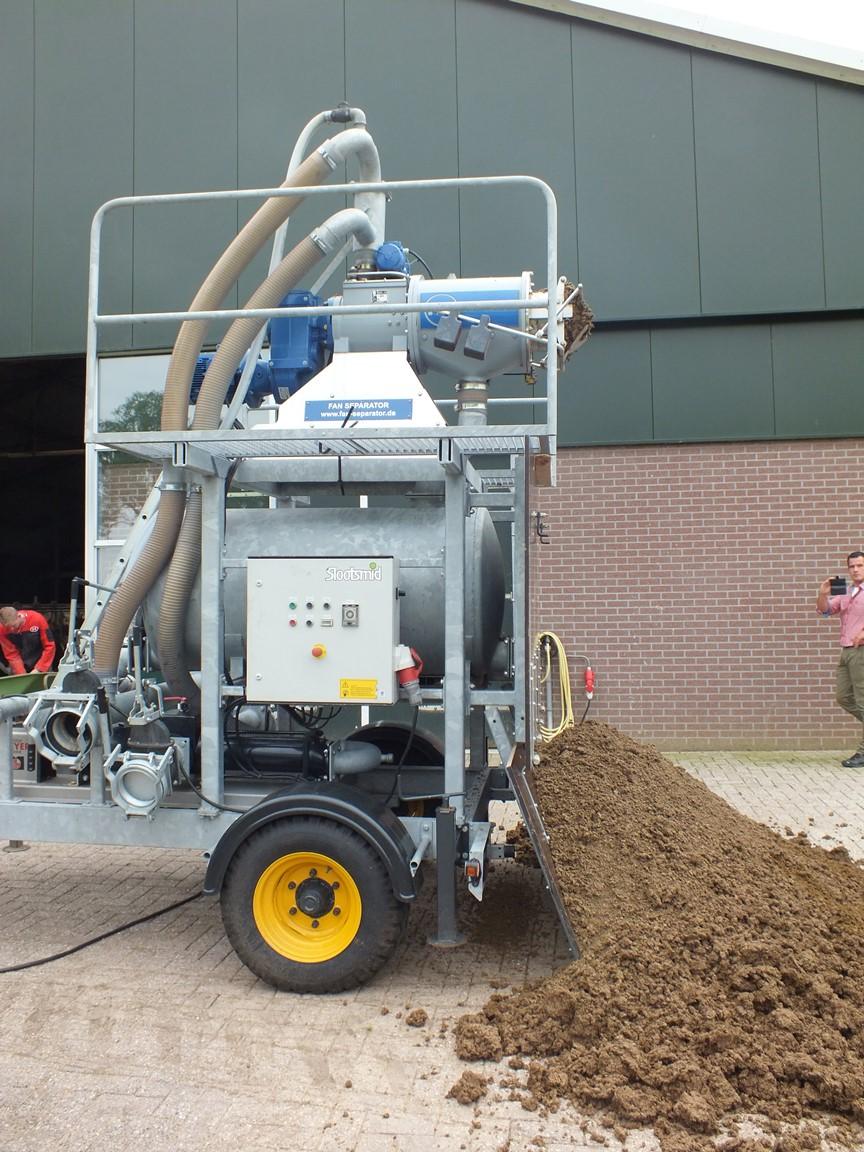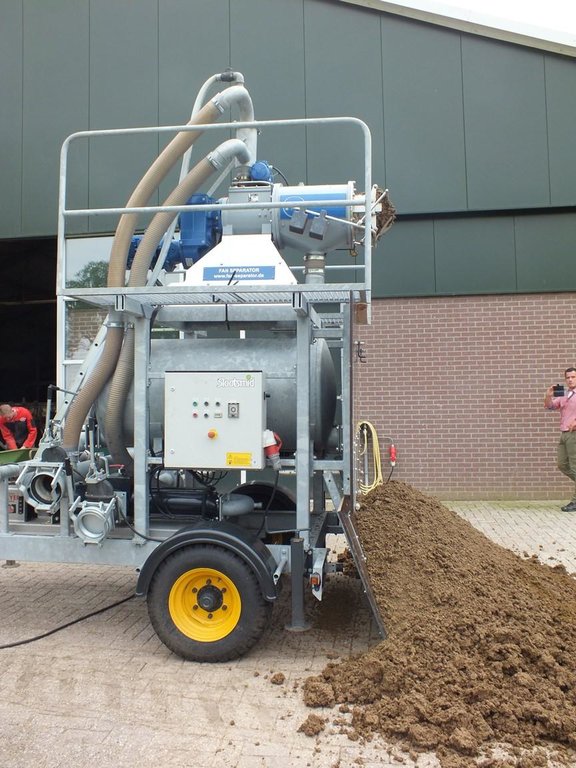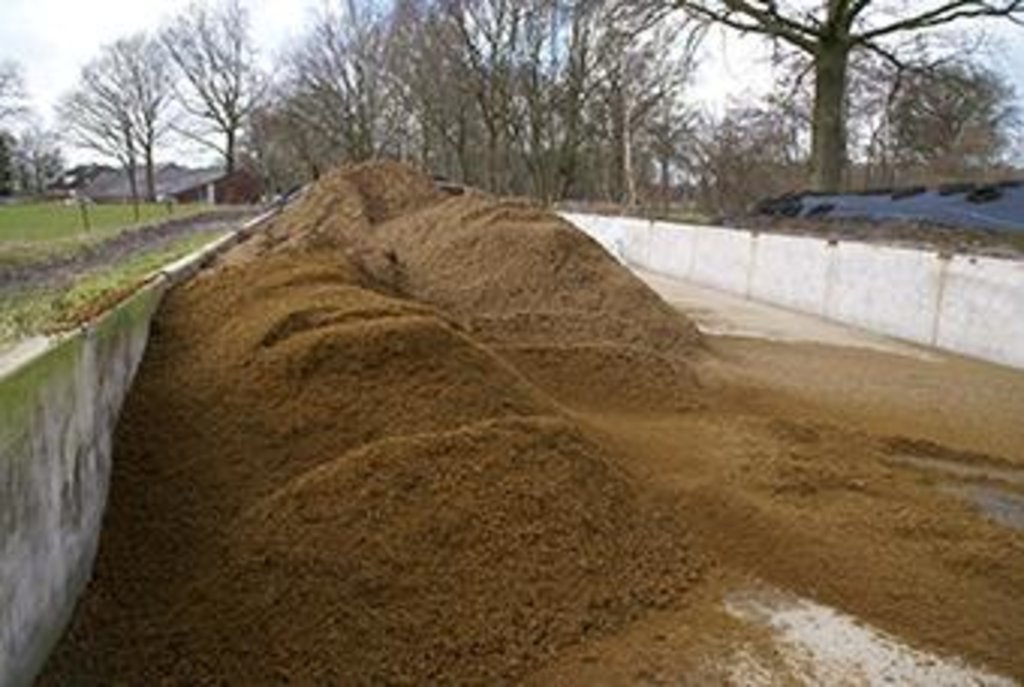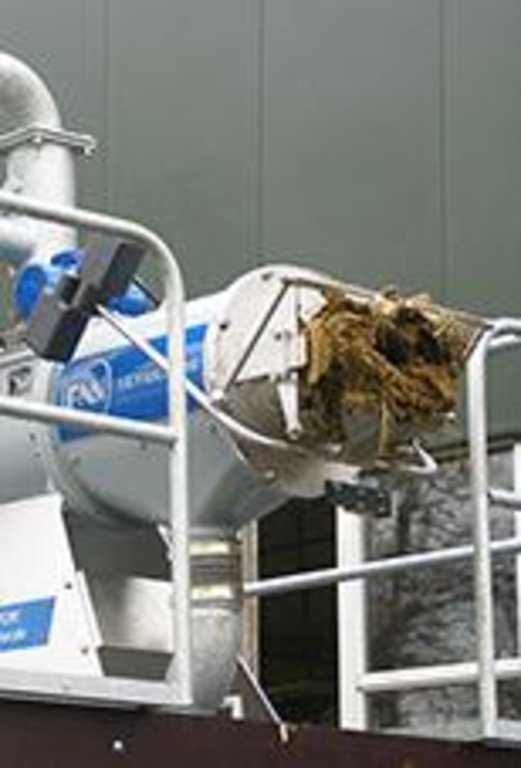Manure separation to better distribute organic matter at farm level [هولندا]
- تاريخ الإنشاء:
- تحديث:
- جامع المعلومات: Simone Verzandvoort
- المحرر: –
- المُراجع: Fabian Ottiger
Mestscheiding om organische stof op bedrijfsniveau beter te verdelen (NL)
technologies_1256 - هولندا
عرض الأقسام
توسيع الكل طي الكل1. معلومات عامة
1.2 تفاصيل الاتصال بالأشخاص الرئيسيين لمصدر المعلومات والمؤسسات المشاركة في تقييم وتوثيق التقنية
متخصص في الإدارة المستدامة للأراضي:
Smit Annemieke
annemieke.smit@wur.nl
Wageningen Environmental Research (Alterra)
Droevendaalsesteeg, 6708 PB Wageningen, Netherlands
هولندا
متخصص في الإدارة المستدامة للأراضي:
Leever Henk
info@hoeduurzaam.n
HOEDuurzaam
هولندا
متخصص في الإدارة المستدامة للأراضي:
Rienks Willem
willem.rienks@rom3d.nl
Rom3D
Dorshorst 1, 7217 PH Harfsen, Netherlands
هولندا
اسم المشروع الذي سهّل توثيق/تقييم التقنية (إذا كان ذلك على صلة)
Preventing and Remediating degradation of soils in Europe through Land Care (EU-RECARE )اسم المؤسسة (المؤسسات) التي سهلت توثيق/تقييم التقنية (إذا كان ذلك على صلة)
Hoe Duurzaam - هولندااسم المؤسسة (المؤسسات) التي سهلت توثيق/تقييم التقنية (إذا كان ذلك على صلة)
ROM3D - هولندااسم المؤسسة (المؤسسات) التي سهلت توثيق/تقييم التقنية (إذا كان ذلك على صلة)
Wageningen Environmental Research (Alterra) - هولندااسم المؤسسة (المؤسسات) التي سهلت توثيق/تقييم التقنية (إذا كان ذلك على صلة)
Provincie Gelderland - هولندااسم المؤسسة (المؤسسات) التي سهلت توثيق/تقييم التقنية (إذا كان ذلك على صلة)
Vitens - Laat Water Voor Je Werken - هولندا1.3 الشروط المتعلقة باستخدام البيانات الموثقة من خلال WOCAT
متى تم تجميع البيانات (ميدانيا)؟:
20/03/2015
يوافق جامع المعلومات والشخص (لاشخاص) الرئيسي لمصدر المعلومات على الشروط المتعلقة باستخدام البيانات الموثقة من خلال WOCAT:
نعم
2. وصف تقنيةالإدارة المستدامي للأراضي
2.1 وصف مختصر للتقنية
تعريف التقنية:
Separation of cow manure is a common practice on dairy farms in The Netherlands to improve the nutrient use efficiency.
2.2 وصف تفصيلي للتقنية
الوصف:
Het primaire doel van mestscheiding is de productie van een dikke
fractie met hoge gehalten aan organische stof en mineralen en een laag vochtgehalte. Een dergelijke geconcentreerde
fosfaatrijke fractie is een waardevolle organische meststof en kan over grote afstand vervoerd worden. De
dunne waterige fractie, met daarin het grootste deel van de stikstof, kan op eigen grond of in de nabije omgeving als
meststof worden aangewend of verder worden gezuiverd tot loosbaar water.
Slurry manure is fed through a manure separator that separates much of the thick material from the liquid portion. These fractions differ in the proportion between P and N; the thick fraction contains relatively more P than the thin fraction.
The thick fraction is used on maize fields or as substrate in cow stables; the thin fraction, with the larger part of the nitrogen, can be used on other parts of the farm or is exported from the farm to be treated for discharge in the environment. Due to stricter regulations for the application of N and P to crop land and grassland, less manure may be applied to the land. If manure must be exported because the threshold for P is reached, this implies that also N is exported from the farm.
Purpose of the Technology: Slurry from livestock consists of more than 90% of water. The primary purpose of manure separation is to produce a thick fraction with high contents of organic matter and nutrients and a low moisture content. The thick fraction is a valuable fertiliser and can be transported over large distances. The thin fraction, with the larger part of the nitrogen, can be applied as fertiliser on the farm, on farmland in the proximity, or can be treated into a quality suitable for discharge in the environment or water drainage system.
Manure separation allows farmers to use organic matter from manure more efficiently at the farm level. Manure separation increases the efficiency of processing and using manure in 5 ways:
1. By concentrating phosphorus in the thick fraction the volume of manure to be exported can be decreased, and also the export of nitrogen from the farm.
2. Manure separation creates three types of manure (thick, thin and mixed), which allows for differentiated application to different fields and crops, and reductions on requirements for artificial fertiliser.
3. Manure separation decreases the volume of manure to be exported from farms, and therefore saves energy and transport costs.
4. The thick fraction can be stored in stacks, taking up less space.
5. The thick fraction can be used as substrate in stables, replacing costly sawdust.
Establishment / maintenance activities and inputs: Purchase a manure separator. Periodically feed your collected slurry manure through the separator and then apply the thick portion to your fields. Discard the liquid portion.
Natural / human environment: Dairy farming on sandy soils in the eastern part of The Netherlands. Stricter manure regulation originting from the Nitrates Directive sets a limit on the amounts of animal manure for farms on sandy and loess soils in the eastern and southern part of The Netherlands.
2.3 صور التقنية
2.5 البلد/المنطقة/المواقع التي تم تنفيذ التقنية فيها والتي يغطيها هذا التقييم
البلد:
هولندا
المنطقة/الولاية/المحافظة:
Gelderland
مزيد من التفاصيل حول الموقع:
Haarlo - Oude Eibergen
Map
×2.6 تاريخ التنفيذ
في حالة عدم معرفة السنة بالتحديد، يرجى الإشارة إلى التاريخ التقريبي:
- منذ أقل من 10 سنوات (مؤخرًا)
2.7 إدخال التقنية
حدد كيف تم إدخال التقنية:
- من خلال المشاريع/ التدخلات الخارجية
التعليقات (نوع المشروع، الخ):
The land users's initiative was through the application for the project Healthy Sand by a group of farmers. During the Gezond Zand Project the group organised themselves in the Foundation HOEDuurzaam. The project ran from 2012-2014 and is followed by the new project BodemRijk.
The external initiative was from the drinking water company Vitens and the Province of Gelderland in the same period.
3. تصنيف تقنية الإدارة المستدامي للأراضي
3.2 نوع (أنواع) استخدام الأراضي الحالية حيث يتم تطبيق التقنية

الأراضي الزراعية
- زراعة سنوية
المحاصيل الرئيسية (المحاصيل النقدية والغذائية):
Major cash crop annual cropping: Potatoes
Major food crop annual cropping: Maize, cereals
Major food crop perennial (non-woody) cropping: Grass
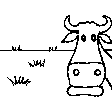
أراضي الرعي
الرعي المكثف/ إنتاج الأعلاف:
- قطع وحمل / صفر مرعى
- مراعي محسنة
الأنواع والمنتجات الحيوانية الرئيسية:
Cut and carry/zero grazing: Feeding in stables
Improved pasture: Feeding in field
التعليقات:
Major land use problems (compiler’s opinion): Decrease of soil organic matter content.
Major land use problems (land users’ perception): The group of farmers in the area expeience decreasing organic matter content in soil.
Cut-and-carry/ zero grazing: feeding in stables
Improved pasture: feeding in field
3.3 مزيد من المعلومات حول استخدام الأراضي
التعليقات:
Water supply: rainfed, mixed rainfed - irrigated, rainfed, mixed rainfed - irrigated
عدد مواسم الزراعة في السنة:
- 1
حدد:
Longest growing period in days: 250Longest growing period from month to month: March-November
كثافة الثروة الحيوانية (إذا كانت ذات صلة):
> 100 LU /km2
3.4 مجموعةالإدارة المستدامة للأراضي التي تنتمي إليها هذه التقنية
- الإدارة المتكاملة لخصوبة التربة
3.5 انتشار التقنية
حدد انتشار التقنية:
- منتشرة بالتساوي على مساحة
إذا كانت التقنية منتشرة بالتساوي على منطقة ما، فحدد المنطقة التقريبية المغطاة:
- < 0.1 كم2 (10 هكتار)
التعليقات:
The thick manure fraction is applied to corn fields. There is 240 ha of corn in the area amongst 44 farmers. Only 2 farmers are applying this technology.
3.6 التدابير التقنية في مجال إلادارة المستدامة للأراضي

التدابير الزراعية
- A2: المادة العضوية/خصوبة التربة
التعليقات:
Main measures: agronomic measures
Type of agronomic measures: manure / compost / residues
3.7 الأنواع الرئيسية من تدهور الأراضي التي تناولتها التقنية
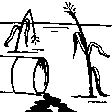
التدهور الكيميائي للتربة
- (Cn): تراجع الخصوبة وانخفاض محتوى المادة العضوية (غير ناتج عن الانجراف)
التعليقات:
Main type of degradation addressed: Cn: fertility decline and reduced organic matter content
Main causes of degradation: soil management (Intensive ploughing)
Secondary causes of degradation: crop management (annual, perennial, tree/shrub) (Intensive crop management)
3.8 منع أو حد أو عكس تدهور الأراضي
تحديد هدف التقنية فيما يتعلق بتدهور الأراضي:
- اصلاح/إعادة تأهيل الأراضي المتدهورة بشدة
التعليقات:
Main goals: rehabilitation / reclamation of denuded land
4. المواصفات الفنية، وأنشطة التنفيذ، والمدخلات، والتكاليف
4.1 الرسم الفني للتقنية
المؤلف:
Extension, http://www.extension.org/pages/27470/solids-separation-in-swine-manure-handling-systems#.VU9uDk0cRoI
4.2 المواصفات الفنية/شروحات الرسم الفني
Slurry manure is the influent placed into the separator. A drill-press pushes the slurry and pressure squeezes out the liquid portion (Liqour). The thick manure (cake) is pressed out the end. The screen holds the solid material in the drill press.
Location: not applicable. not applicable
Date: 13-01-2008
Technical knowledge required for field staff / advisors: moderate (The agricultural advisor should advise on options for application of the thick fraction of manure based on composition.)
Technical knowledge required for land users: moderate (Farmer has to calculate and strategize distribution of thick manure fractions and RDM(slurry) to reach balanced application rates and consider impact between fields.)
Technical knowledge required for technical advisor from machine company: moderate (Technical advisor should advise on type of manure separator (screw or roller) depending on the intended use of the thick and thin fractions.)
Main technical functions: increase in organic matter
Secondary technical functions: increase in nutrient availability (supply, recycling,…)
Manure / compost / residues
Material/ species: Thick fraction obtained by separation of manure from dairy cows.
Quantity/ density: 10 t/ha
Remarks: The thick fraction is applied separately from the slurry.
4.3 معلومات عامة بخصوص حساب المدخلات والتكاليف
عملة أخرى/ عملة وطنية (حدد):
Euro
أشر إلى سعر الصرف من الدولار الأمريكي إلى العملة المحلية (إذا كان ذا صلة): 1 دولار أمريكي =:
0,94
اذكر متوسط تكلفة أجر العمالة المستأجرة في اليوم الواحد:
255.70
4.4 أنشطة التأسيس
| النشاط | نوع التدبير | التوقيت | |
|---|---|---|---|
| 1. | Buy a seperator | زراعية |
4.5 التكاليف والمدخلات اللازمة للتأسيس
| تحديد المدخلات | الوحدة | الكمية | التكاليف لكل وحدة | إجمالي التكاليف لكل مدخل | % من التكاليف التي يتحملها مستخدمو الأراضي | |
|---|---|---|---|---|---|---|
| معدات | Seperator | Machine | 1,0 | 5320,0 | 5320,0 | |
| إجمالي تكاليف إنشاء التقنية | 5320,0 | |||||
التعليقات:
Life span of the seperator: 6 years
Number of parties sharing: 44
4.6 الصيانة/الأنشطة المتكررة
| النشاط | نوع التدبير | التوقيت/الوتيرة | |
|---|---|---|---|
| 1. | Operating separator | زراعية | once per year |
| 2. | Applying both thick fraction manure and RDM manure | زراعية | once per year |
4.7 التكاليف والمدخلات اللازمة للصيانة/للأنشطة المتكررة (سنويًا)
| تحديد المدخلات | الوحدة | الكمية | التكاليف لكل وحدة | إجمالي التكاليف لكل مدخل | % من التكاليف التي يتحملها مستخدمو الأراضي | |
|---|---|---|---|---|---|---|
| العمالة | Labour | ha | 1,0 | 127,68 | 127,68 | 100,0 |
| العمالة | Sampling manure | ha | 1,0 | 21,28 | 21,28 | 100,0 |
| معدات | Machine use | ha | 1,0 | 308,56 | 308,56 | 100,0 |
| معدات | rent of manure separator | h | 1,0 | 16,5 | 16,5 | 100,0 |
| معدات | depreciation costs | m3 | 1,0 | 0,65 | 0,65 | |
| معدات | maintenance | machine | 1,0 | 0,3 | 0,3 | |
| معدات | Electricity | ha | 1,0 | 3,72 | 3,72 | 100,0 |
| الأسمدة والمبيدات الحيوية | Extra Potassium | ha | 1,0 | 10,64 | 10,64 | 100,0 |
| إجمالي تكاليف صيانة التقنية | 489,33 | |||||
التعليقات:
Machinery/ tools: Separator, truck, loader, tractor
Cost of everything per hour was multiplied by totals and divided by hectares applied so costs per hectare are given. The establishment cost of the separator is the total unit. It was purchased by the farmer's foundation. It can not be given in a cost per hectare.
4.8 أهم العوامل المؤثرة على التكاليف
قدم وصفا لأهم العوامل التي تؤثر على التكاليف:
Labour. Equipment.
5. البيئة الطبيعية والبشرية
5.1 المناخ
هطول الأمطار السنوي
- < 250 مم
- 251- 500 ملم
- 501 - 750ملم
- 1,000-751 ملم
- 1,500-1,100 ملم
- 2,000-1,500 ملم
- 3,000-2,001 ملم
- 4,000-3,100 ملم
- > 4000 ملم
المواصفات/التعليقات على هطول الأمطار:
182 days of precipitation annually
المنطقة المناخية الزراعية
- شبه رطبة
Thermal climate class: temperate. Mean monthly temperature varies between 2-17 °C ( LGP 240-269 days, mean monthly temperature varies between 2-17 °C)
5.2 طوبوغرافيا
متوسط الانحدارات:
- مسطح (0-2%)
- بسيط (3-5%)
- معتدل (6-10%)
- متدحرج (11-15%)
- تلال (16-30%)
- شديدة الانحدار(31-60%)
- فائقة الانحدار (>60%)
التضاريس:
- هضاب/سهول
- أثلام مرتفعة
- المنحدرات الجبلية
- منحدرات التلال
- منحدرات في السفوح
- قاع الوادي
المنطقة الارتفاعية:
- 100-0 متر فوق سطح البحر
- 500-101 متر فوق سطح البحر
- 1,000-501 متر فوق سطح البحر
- 1,500-1,001 متر فوق سطح البحر
- 2,000-1,501 متر فوق سطح البحر
- 2,500-2,100 متر فوق سطح البحر
- 3,000-2,501 متر فوق سطح البحر
- 4,000-3,001 متر فوق سطح البحر
- > 4000 متر فوق سطح البحر
التعليقات والمواصفات الإضافية بشأن التضاريس:
Altitudinal zone: 0-100 m a.s.l. (up to 45 metres a.s.l.)
Slopes on average: Flat and gentle (only incidentally.)
5.3 التربة
متوسط عمق التربة:
- ضحل جدًا (0-20 سم)
- ضحلة (21-50 سم)
- متوسطة العمق (51-80 سم)
- عميقة (81-120 سم)
- عميقة جدًا (> 120 سم)
قوام التربة (التربة السطحية):
- خشن / خفيف (رملي)
- متوسط ( طميي، سلتي)
المواد العضوية في التربة السطحية:
- عالية (>3%)
- متوسطة (1-3%)
إذا كان متاحًا، قم بإرفاق وصف كامل للتربة أو تحديد المعلومات المتوفرة، على سبيل المثال نوع التربة، الرقم الهيدروجيني/ درجة حموضة التربة، قدرة التبادل الكاتيوني، النيتروجين، الملوحة وما إلى ذلك.
Soil depth on average: Deep (A and B horizons up till 40 cm in Gleyic Podzols and Umbric Gleysols (ca 75% of the area). Hardly any soil organic matter below 15 cm. Rooting depth is up to 80 cm.) and very deep (deep topsoils rich in organic matter in the Fimic Anthrosols (12% of the area).)
Soil texture is coarse/light (most soils have a sandy texture due to the substrate consisting of cover sands) and medium (Soils in former creek valleys contain loam (Umbric Gleysols))
Soil fertility is low (Most soils have a low fertility due to the sandy substrate (specifically the Gleyic Podzols, ca 40% of the area)) and very high (in Fimic Anthrosols originated due to application of farmyard manure since medieval times (12% of the area))
Topsoil organic matter is medium (the purpose of the technology is to increase soil organic matter at farm level)
Soil drainage/infiltration is good (deep groundwater table (H>40-80 cm; L>120 cm) in the sandy soils on thick substrate of cover sands (in 65% of the area)) and medium (shallow groundwater tables in the Umbric Gleysols (35% of the area).
Soil water storage capacity is medium (in the other soils, varying with the soil organic matter content) and very high (in the Fimic Anthrosols with high SOM in the topsoil.)
5.4 توافر المياه ونوعيتها
منسوب المياه الجوفية:
< 5 م
توافر المياه السطحية:
متوسط
نوعية المياه (غير المعالجة):
مياه الشرب سيئة (تتطلب معالجة)
تعليقات ومواصفات أخرى بشأن نوعية المياه وكميتها:
Ground water table: <5m (in all soil types the highest level of the groundwater table during the year is <140 cm below the soil surface. The lowest level can be lower than 120 cm)
Availability of surface water is medium (From small rivers (De Berkel) and creeks)
Water quality (untreated) is poor drinking water (levels of the pesticides Bentazon and MCPP in the groundwater have incidentally exceeded the norms for drinking water production between 1985 and 2009)
5.5 التنوع البيولوجي
تنوع الأنواع:
- متوسط
التعليقات والمواصفات الإضافية بشأن التنوع البيولوجي:
Soil biodiversity is high in the Fimic Anthrolsols.
5.6 خصائص مستخدمي الأراضي الذين يطبقون التقنية
التوجه السوقي لنظام الإنتاج:
- مختلط (كفاف/ تجاري)
- تجاري/سوق
الدخل من خارج المزرعة:
- أقل من % 10من كامل الدخل
المستوى النسبي للثروة:
- متوسط
أفراداً أو مجموعات:
- فرد/أسرة معيشية
مستوى المكننة:
- ميكانيكية/ مزودة بمحرك
الجنس:
- رجال
اذكر الخصائص الأخرى ذات الصلة لمستخدمي الأراضي:
Land users applying the Technology are mainly common / average land users
Difference in the involvement of women and men: Most outdoor farm operations are completed by men. Women often have jobs outside the farm.
Population density: 10-50 persons/km2
Annual population growth: < 0.5%
100% of the land users are average wealthy and own 100% of the land.
Off-farm income specification: Some farmers are contractual workers. Wives of farmers often have a job, e.g. at the municipality or craft work. Farms do not provide B&B or educational services.
Market orientation of cropland production system is mixed ( Maize is completely used to feed cows (max 20% of the area is allowd under maize); other arable crops are sold to the market. Dairy production is commercial. )
Market orientation of grazing land production system is commercial/market (dairy farmers grow feed crops for their livestock)
5.7 متوسط مساحة الأرض المملوكة أو المستأجرة من قبل مستخدمي الأراضي الذين يطبقون التقنية
- < 0.5 هكتارا
- 0.5 - 1 هكتار
- 1 -2 هكتار
- 2 - 5 هكتار
- 5 - 15 هكتار
- 15 - 50 هكتار
- 50 - 100هكتار
- 500-100 هكتار
- 1,000-500 هكتار
- 10,000-1,000 هكتار
- > 10,000 هكتار
هل يعتبر هذا نطاقًا صغيرًا أو متوسطًا أو واسعا (في إشارة إلى السياق المحلي)؟:
- على نطاق متوسط
التعليقات:
Average area of land owned or leased by land users applying the Technology: 5-15 ha, 15-50 ha, 50-100 ha
Cropland per household: 15-50 ha (6 land owners (situation in 2014)) and 50-100 ha (15 land owners, situation in 2014)
Grazing land per household: 5-15 ha (average grassland is 7.8 ha per household)
5.8 ملكية الأراضي، وحقوق استخدام الأراضي، وحقوق استخدام المياه
ملكية الارض:
- فردية، يوجد سند ملكية
- Other forms of exploitation
حقوق استخدام الأراضي:
- مؤجر
- فردي
التعليقات:
Many fields have other forms of exploitation than individual ownership or lease.
5.9 الوصول إلى الخدمات والبنية التحتية
الصحة:
- ضعيف
- معتدل
- جيد
التعليم:
- ضعيف
- معتدل
- جيد
المساعدة التقنية:
- ضعيف
- معتدل
- جيد
العمل (على سبيل المثال خارج المزرعة):
- ضعيف
- معتدل
- جيد
الأسواق:
- ضعيف
- معتدل
- جيد
الطاقة:
- ضعيف
- معتدل
- جيد
الطرق والنقل:
- ضعيف
- معتدل
- جيد
مياه الشرب وخدمات الصرف الصحي:
- ضعيف
- معتدل
- جيد
الخدمات المالية:
- ضعيف
- معتدل
- جيد
6. الآثار والتصريحات الختامية
6.1 الآثار التي أظهرتها التقنية في الموقع
الآثار الاجتماعية والاقتصادية
الإنتاج
إنتاج المحاصيل
التعليقات/ حدد:
expected, based on better targeted fertiliser application
توافر المياه ونوعيتها
الطلب على مياه الري
التعليقات/ حدد:
expected due to increase of SOM
الدخل والتكاليف
النفقات على المدخلات الزراعية
التعليقات/ حدد:
On artificial fertiliser (30-80% reduction on N fertiliser) and substrate for cow stables. But since the thick fraction contains less N per kg of P2O5 than the original mix, farners applying the thick fraction (for maize as described in this QT) may need to apply more articial N-fertilizer
دخل المزرعة
التعليقات/ حدد:
Decreased costs for manure export from the farm: A smaller part of the total manure mix needs to be exported (ca 35% less N-export than without manure separation; 10-30% less net energy use)
آثار اجتماعية واقتصادية أخرى
Ease of manure storage
التعليقات/ حدد:
Thick fraction is less voluminous and can be stacked
Manure processing
التعليقات/ حدد:
Thick fraction can be more easily stored and transported; thin fraction takes up less volume and does not need to be transported.
Energy use
الكمية قبل الإدارة المستدامة للأراضي:
4-7 GJ/ha
الكمية بعد الإدارة المستدامة للأراضي:
3-5 GJ/ha
التعليقات/ حدد:
Energy use for manure transport, processing, digestion and fertiliser use
Expenses on machinery
التعليقات/ حدد:
For farms with less than 1000-2000 tons of manure to be separated expenses on manure separation become larger than benefits. Such farms could better hire a mobile separator, as in the descirption of this SLM technology.
الآثار الاجتماعية والثقافية
Improved livelihoods and human well-being
التعليقات/ حدد:
Dairy farmers have learned more about the importance of soil organic matter for their production systems, and about the consequences of soil and manure management on soil organic matter and other aspects of soil health. This learning was brought by the exchange of knowledge between farmers and experts, and between farmers themselves. Farmers also profited from services provided to them by the farmers' foundations: shared investments (e.g. in the manure separator) and support in the application for subsidies to finance the SLM measure.
الآثار الايكولوجية
دورة المياه / الجريان السطحي
جودة المياه
التعليقات/ حدد:
expected: reduction in leaching of nitrate and phosphorus due to better targeted manuring to plant needs
التربة
رطوبة التربة
التعليقات/ حدد:
due to increased SOM
المادة العضوية في التربة/تحت الطبقة c
التعليقات/ حدد:
due to improved manure composition for crop growth and build-up of SOM
الحد من مخاطر المناخ والكوارث
انبعاث الكربون والغازات المسببة للاحتباس الحراري
التعليقات/ حدد:
due to better targeted fertiliser use to needs of crops and reduced use of artificial fertiliser (30-80% less supply of N-fertiliser required)
الآثار الايكولوجية الأخرى
Emission of NH3
الكمية قبل الإدارة المستدامة للأراضي:
18
الكمية بعد الإدارة المستدامة للأراضي:
20
التعليقات/ حدد:
NH3 loss in kg/ha, for dairy farms with 1.75 cows/ha, manure prod of 255 kg N/haand other assumptions; model estimate
P2O5 surplus
الكمية قبل الإدارة المستدامة للأراضي:
1
الكمية بعد الإدارة المستدامة للأراضي:
4
التعليقات/ حدد:
P2O5 surplus in kg/ha, same conditions
6.2 الآثار التي أظهرتها التقنية خارج الموقع
تلوث المياه الجوفية/الأنهار
الكمية قبل الإدارة المستدامة للأراضي:
12.5
الكمية بعد الإدارة المستدامة للأراضي:
10.4
التعليقات/ حدد:
Reduced leaching of nitrate from fields where manure is applied due to less surplus of N in thin fraction(NO3-N in groundwater in mg/lfor farm with 1.75 dairy cows/ha)
Energy use
الكمية قبل الإدارة المستدامة للأراضي:
4-7 GJ/ha
الكمية بعد الإدارة المستدامة للأراضي:
3-5 GJ/ha
التعليقات/ حدد:
Energy use for transport of manure from farms, processing, digestion, fertiliser use
6.3 تعرض التقنية وحساسيتها لتغير المناخ التدريجي والظواهر المتطرفة/الكوارث المرتبطة بالمناخ (كما يراها مستخدمو الأراضي)
تغير مناخ تدريجي
تغير مناخ تدريجي
| الموسم | نوع التغير المناخي/ المتطرف | كيف تتعامل التقنية مع ذلك؟ | |
|---|---|---|---|
| درجة الحرارة السنوية | زيادة | جيدا |
الظواهر المتطرفة / الكوارث المرتبطة بالمناخ
الكوارث الجوية
| كيف تتعامل التقنية مع ذلك؟ | |
|---|---|
| عاصفة ممطرة محلية | جيدا |
| عاصفة هوائية محلية | جيدا |
الكوارث المناخية
| كيف تتعامل التقنية مع ذلك؟ | |
|---|---|
| جفاف | جيدا |
الكوارث الهيدرولوجية
| كيف تتعامل التقنية مع ذلك؟ | |
|---|---|
| فيضان عام (نهر) | جيدا |
العواقب الأخرى المتعلقة بالمناخ
العواقب الأخرى المتعلقة بالمناخ
| كيف تتعامل التقنية مع ذلك؟ | |
|---|---|
| انخفاض فترة النمو | جيدا |
التعليقات:
The technology is almost independent on environmental change, since it depends on the availability of manure. It is strongly dependent on the farming system (supply of manure and possibility to apply the separated fractions on farm).
6.4 تحليل التكلفة والعائد
التعليقات:
There is no evidence yet on economic and agronomic effects of using the manure separator in the area, so the land user's perspective cannot be given. Assessments of costs, effects and energy use based on modelling are available in the literature for dairy and arable farming in the NL in Schroder et al. (2009). These reveal that for farms with 1.75 to 2.18 dairy cows/ha and under conditions of manure production and application and manure regulations for this part of The Netherlands, the required export of N-manure could decrease by 35%, required N-fertiliser by 30-80%, and net energy use by 10-30%.
6.5 اعتماد التقنية
إذا كان متاحًا، قم بتحديد الكمية (عدد الأسر المعيشية و/أو المساحةالمغطاة):
2
التعليقات:
100% of land user families have adopted the Technology with external material support
2 land user families have adopted the Technology with external material support
Comments on acceptance with external material support: The Foundation HOEDuurzaam purchased the manure separator. Farmers can use the machine for 15 euros/hour, and can apply for a subsidy from the Province when applying the technology. Two farmers were actively using the machine in 2014.
Comments on adoption trend: We do not have information on how many farmers were using the manure separator in 2015. This information will become available in 2016.
6.7 نقاط القوة / المزايا / الفرص التي توفرها التقنية
| نقاط القوة/ المزايا/ الفرص من وجهة نظر مستخدمي الأراضي |
|---|
|
increases soil organic matter How can they be sustained / enhanced? continued application of the measure and subsidy for maintenance of the manure separator by the Foundation; support to farmers in calculating parameters for manure separation specific for their farm (type of manure, concentrations, fields to apply to, livestock intensity) |
| energy saving and reduced loss of N while maintaining equal levels of crop production |
| نقاط القوة/ المزايا/ الفرص من وجهة نظر جامع المعلومات أو غيره من الاشخاص الرئيسيين لمصدر المعلومات |
|---|
|
increases soil organic matter How can they be sustained / enhanced? continued application of the measure and subsidy for maintenance of the manure separator by the Foundation; support to farmers in calculating parameters for manure separation specific for their farm (type of manure, concentrations, fields to apply to, livestock intensity) |
| increases available soil moisture |
| reduces leaching of nitrate to the groundwater |
| reduces energy use for manure handling and transport |
6.8 نقاط ضعف / مساوىء / مخاطر التقنية وسبل التغلب عليها
| نقاط الضعف/ المساوىء/ المخاطر من وجهة نظر جامع المعلومات أو غيره من الاشخاص الرئيسيين لمصدر المعلومات | كيف يمكن التغلب عليها؟ |
|---|---|
| there is still little experience with manure separation and there are many uncertainties relating to separation efficiency and financial aspects |
7. المراجع والروابط
7.3 روابط للمعلومات ذات الصلة المتوفرة على الإنترنت
العنوان/الوصف:
Mestscheiding: relaties tussen techniek, kosten, milieu en landbouwkundige waarde - Jaap Schröder, Fridtjof de Buisonjé, Gerrit Kasper, Nico Verdoes & Koos Verloop, Plant and Animal Sciences Groups Wageningen UR, 2009.
عنوان الرابط URL:
http://edepot.wur.nl/50884
الروابط والوحدات المواضيعية
توسيع الكل طي الكلالروابط
لا يوجد روابط
الوحدات المواضيعية
لا يوجد وحدات مواضيعية


